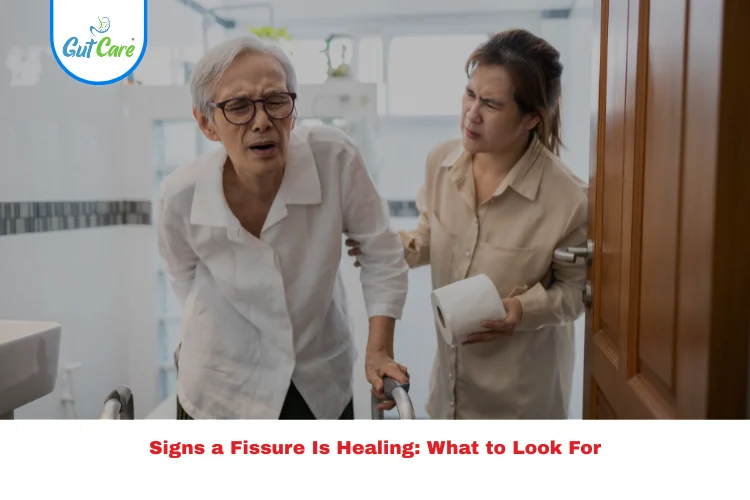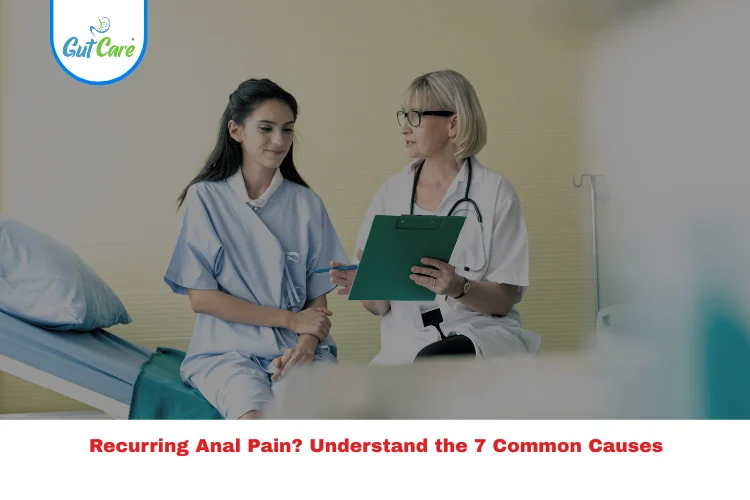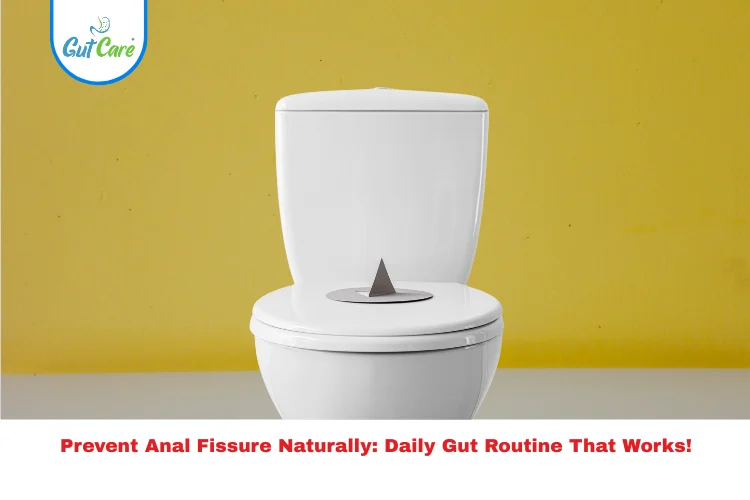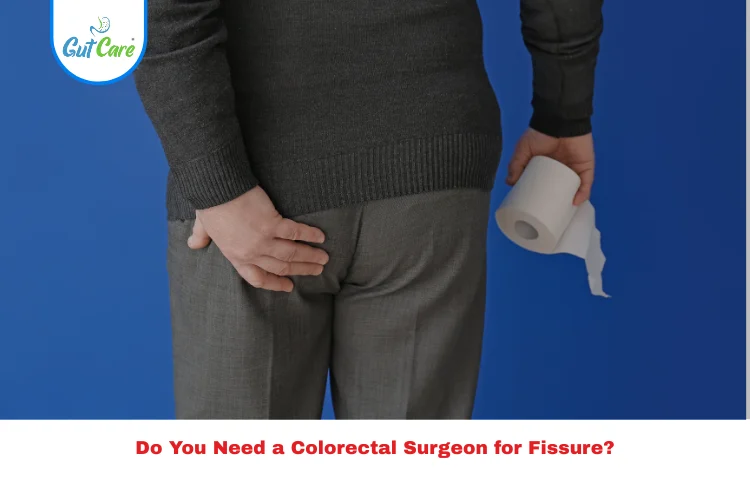Are you wondering about the signs a fissure is healing? If you’ve been dealing with an anal fissure, you’re not alone—and recovery is possible. At GutCare Clinics, we help patients every day manage and overcome this common yet uncomfortable condition. In this guide, we’ll walk you through the healing signs, expected timeline, and expert-backed tips to promote faster recovery.
Anal fissures are tiny tears in the lining of the anal canal, often caused by straining during bowel movements or chronic constipation. While they can be incredibly painful, they typically heal with proper care. But how can you tell if your fissure is on the mend? Let’s break it down.
What Is an Anal Fissure?
An anal fissure is a small tear in the thin, moist tissue (mucosa) lining the anus. It can cause sharp pain during bowel movements, bleeding, and itching. Fissures can be either acute (lasting less than six weeks) or chronic (persisting longer or recurring).
While most acute fissures heal with conservative treatment, chronic fissures may require medical intervention.
Signs a Fissure Is Healing
Recognizing the signs a fissure is healing can bring peace of mind and help you gauge the effectiveness of your treatment plan. Here are the most common indicators:
1. Reduced Pain During Bowel Movements
Pain is often the first and most distressing symptom of a fissure. As healing begins, you’ll likely notice:
- Less sharp or burning pain
- Pain that resolves quickly after a bowel movement
- Overall decrease in discomfort during the day
Why it matters: Pain reduction indicates that the tear is no longer fresh and inflammation is subsiding.
2. Less Bleeding
Fresh fissures often cause bright red blood on toilet paper or in the bowl. As healing progresses:
- Bleeding becomes less frequent
- Blood spots are lighter and less noticeable
- Eventually, bleeding stops altogether
Why it matters: Decreased bleeding is a reassuring sign your body is forming new tissue over the tear.
3. Reduced Swelling and Irritation
During healing, the surrounding tissues become less inflamed:
- External swelling reduces
- Itching or burning sensations diminish
- You feel less urgency or discomfort after using the toilet
4. Return to Regular Bowel Movements
Healing often coincides with:
- Softer, more regular stools
- Less straining or urgency
- Reduced fear of going to the bathroom
Tip: A high-fiber diet and adequate hydration support smoother bowel movements and prevent re-tearing.
5. Improvement in Skin Appearance
With healing, the anal area begins to look less red, irritated, or raw:
- Tear becomes smaller or nearly invisible
- Skin feels smoother and less inflamed
This visual improvement is an encouraging sign a fissure is healing properly.
Healing Timeline: What to Expect
The timeline for healing varies depending on whether your fissure is acute or chronic.
Acute Fissures
- First few days: Pain and bleeding are intense
- 1–2 weeks: Noticeable pain reduction and less bleeding
- 3–6 weeks: Full healing with proper care (e.g., sitz baths, fiber, ointments)
Chronic Fissures
- After 6 weeks: Persistent or recurring symptoms
- May need topical medications (e.g., nitroglycerin, nifedipine) or Botox injections
- Surgical options like lateral internal sphincterotomy may be considered if non-surgical treatments fail
GutCare Clinics offers personalized treatment plans for both acute and chronic cases—especially when healing is delayed.
Tips to Speed Up Healing
Knowing the signs a fissure is healing is helpful, but aiding that healing is even more important. Here’s how:
1. Keep Bowel Movements Soft
- Eat a high-fiber diet: Whole grains, fruits, vegetables
- Drink 6–8 glasses of water daily
- Consider fiber supplements like psyllium husk
2. Sitz Baths
A sitz bath involves soaking your bottom in warm water:
- Do this for 10–15 minutes after each bowel movement
- Helps relax the anal sphincter
- Reduces inflammation and pain
3. Use Prescribed Ointments
Topical treatments relax the muscles and increase blood flow:
- Nitroglycerin ointment: Increases healing by relaxing sphincter muscles
- Lidocaine creams: Reduce pain and discomfort
4. Avoid Straining
- Don’t sit on the toilet too long
- Don’t delay the urge to go
- Use a footstool to support a natural squatting position
5. Practice Good Hygiene
- Gently clean the area with unscented wipes or warm water
- Avoid harsh soaps or rubbing
6. Stay Active
Light physical activity like walking can help stimulate digestion and promote regularity, reducing pressure on the fissure.
When to See a Doctor
While most fissures heal on their own, it’s essential to seek professional care if:
- Symptoms last longer than 6 weeks
- Pain or bleeding worsens
- There’s a visible lump or skin tag
- You have other digestive symptoms (e.g., diarrhea, weight loss)
Chronic or recurring fissures may require specialized treatments available at GutCare Clinics, including advanced diagnostics, medications, and minor surgical procedures.
Conclusion
Recognizing the signs a fissure is healing can help you stay motivated during recovery. From reduced pain and bleeding to improved skin appearance and regular bowel movements, each step forward is progress. However, if you’ve followed all the right tips and symptoms persist, it’s time to speak with a gastrointestinal specialist.
GutCare Clinics is here to support you with expert, compassionate care. Don’t let discomfort control your life—book a consultation and take the next step toward healing.
Healing is possible. Relief is within reach. And you don’t have to go through it alone.
FAQs
1. What are the first signs that a fissure is healing?
The first signs that a fissure is healing often include reduced pain during bowel movements, less bleeding, and decreased swelling or irritation around the anus. These improvements typically indicate that the anal fissure is closing, and that inflammation is< going down.
2. How long does it take to heal anal fissure naturally?
An acute anal fissure usually heals naturally within 3 to 6 weeks with proper care. If you are noticing signs a fissure is healing, like softer stools and less pain, that means the treatment you are using for fissure is working. Chronic fissures may take longer or may need advanced fissure treatment.
3. Can fissures heal on their own without treatment?
Some anal fissures can heal on their own without treatment, especially if your bowel movements remain soft and you do not strain during bowel movements, but sitz baths, topical ointments and a high fiber diet can promote quicker healing. If after a few weeks you have not noticed any signs that a fissure is healing, consult your doctor.
4. What kinds of food aid in the fast healing of fissures?
Food with fiber (fruits, vegetables and whole grains) and plenty of water can help stool stay softer and avoid hard stool irritation. Good nutrition will assist digestion as well as allow the appropriate signs a fissure is healing to show by avoiding re-tears of the tissue.
5. When should I be worried if my fissure is not healing?
If you do not see any signs a fissure is healing in 6 weeks – or any symptoms like pain and bleeding get worse – it could be a chronic fissure. In these circumstances, contact a qualified specialist for advanced fissure treatment options, such as medications or minor surgical procedures.




